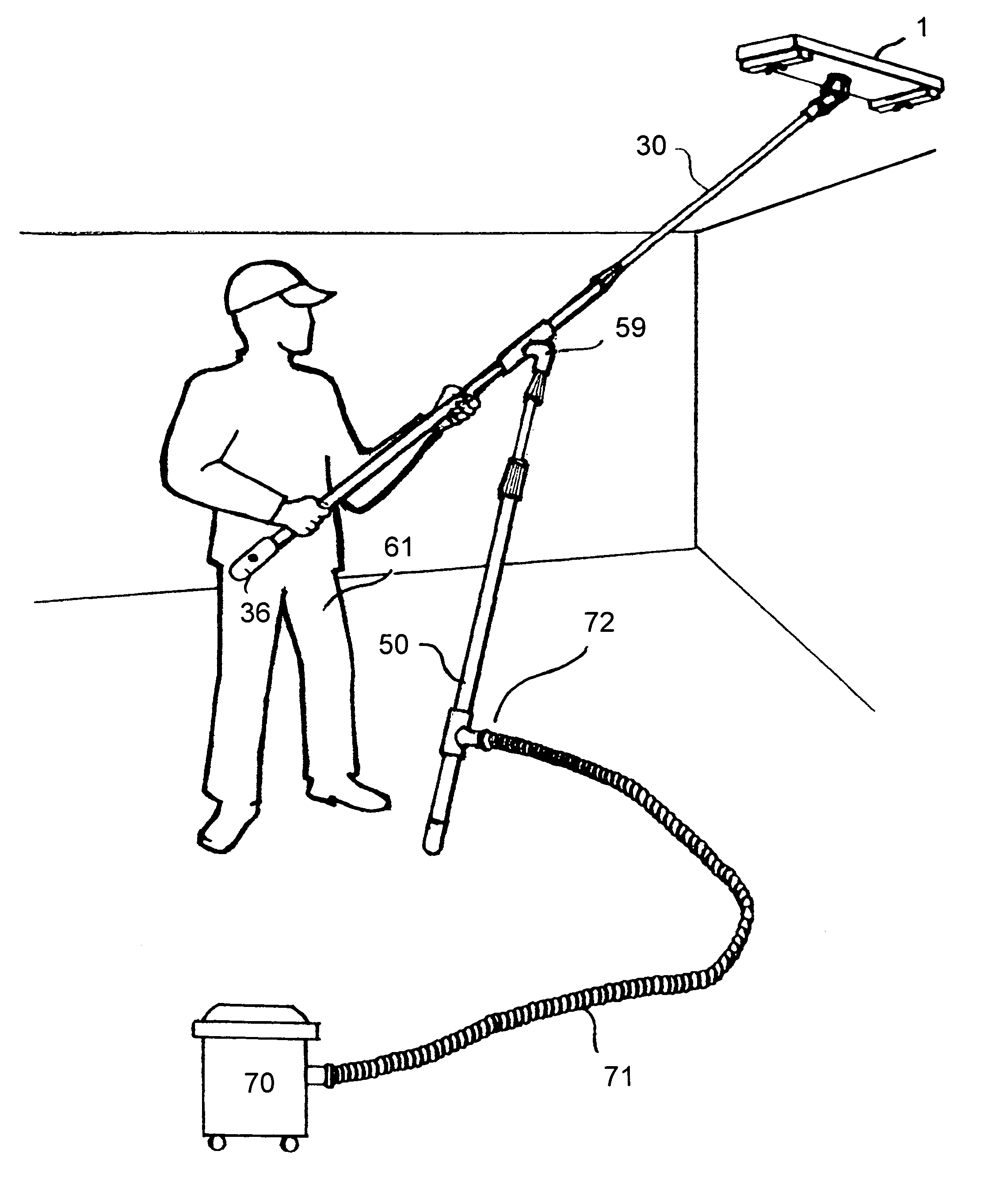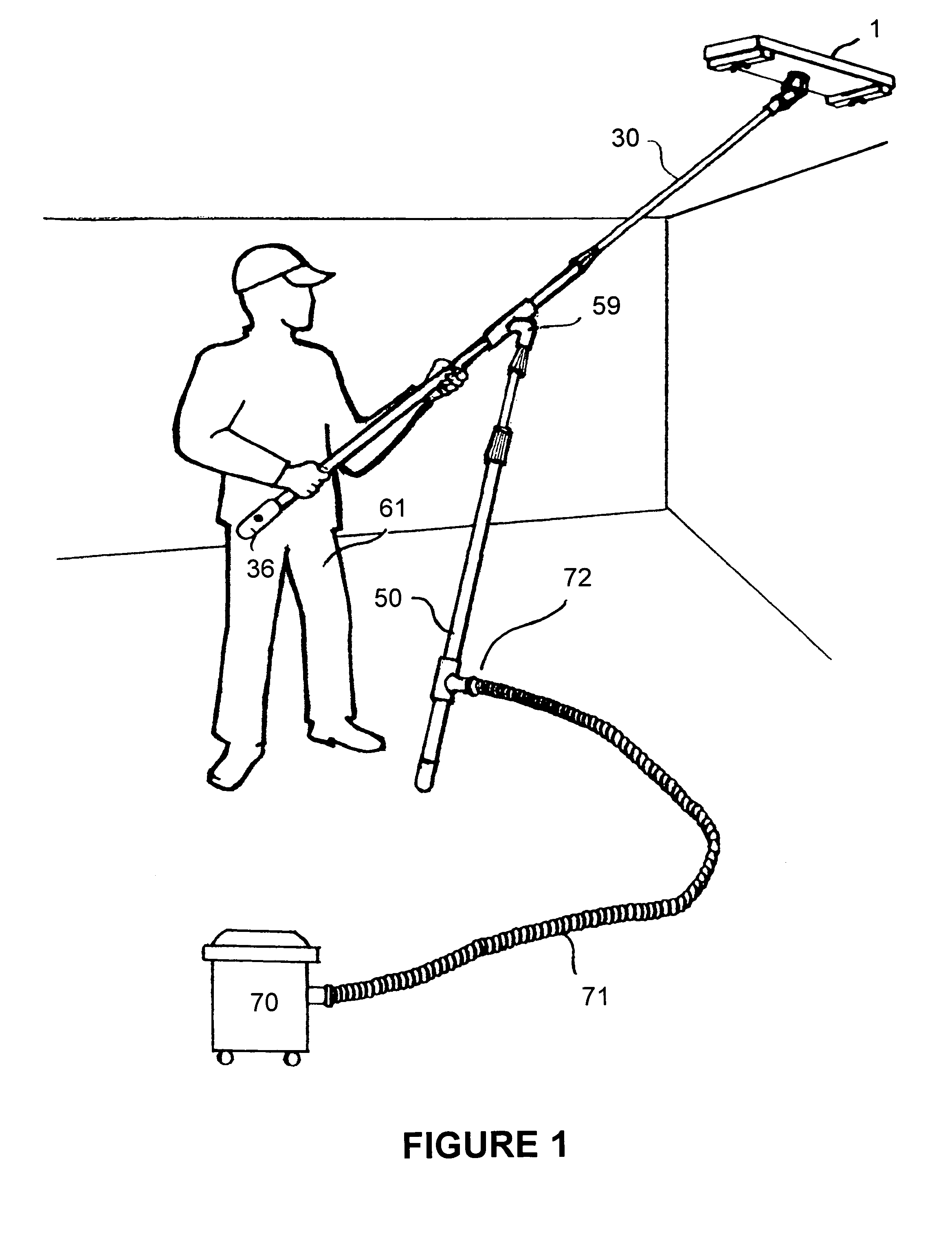Vacuum sander
- Summary
- Abstract
- Description
- Claims
- Application Information
AI Technical Summary
Benefits of technology
Problems solved by technology
Method used
Image
Examples
Embodiment Construction
[0031]A detailed description of the present invention follows with reference to accompanying drawings in which like elements are indicated by like reference letters and numerals.
[0032]FIG. 1 and FIG. 2 show the general and exploded views of the sander of the present invention. The device consists of the following key elements: the main pole 30 is extending from the operator 61 to support the sanding means 1 at its distal end such that it can swivel about it. Support pole 50 (See FIG. 1) is based on the floor of the building and is rotatably attached to the middle section of the main pole 1 through an angle connector 59. Vacuum attachment 72 allows connecting the vacuum 70 through the vacuum hose 71 to the device of the invention.
[0033]Vacuum-assisted sanding means 1 can be designed to be similar to any known sanding means described in the above referenced patents of the prior art as long as it is equipped with vacuum-assisted dust removal means. In the most preferred embodiment of t...
PUM
 Login to View More
Login to View More Abstract
Description
Claims
Application Information
 Login to View More
Login to View More - R&D
- Intellectual Property
- Life Sciences
- Materials
- Tech Scout
- Unparalleled Data Quality
- Higher Quality Content
- 60% Fewer Hallucinations
Browse by: Latest US Patents, China's latest patents, Technical Efficacy Thesaurus, Application Domain, Technology Topic, Popular Technical Reports.
© 2025 PatSnap. All rights reserved.Legal|Privacy policy|Modern Slavery Act Transparency Statement|Sitemap|About US| Contact US: help@patsnap.com



